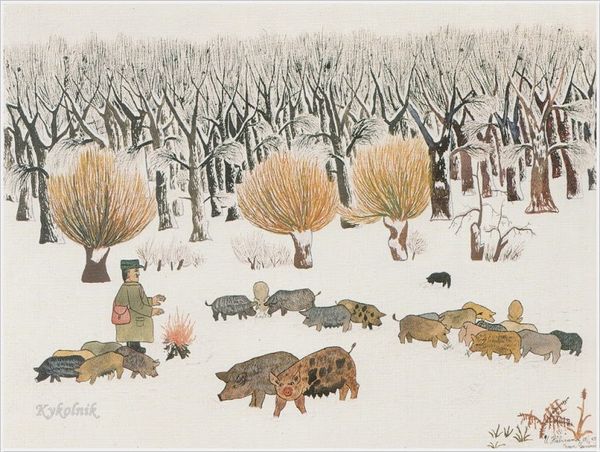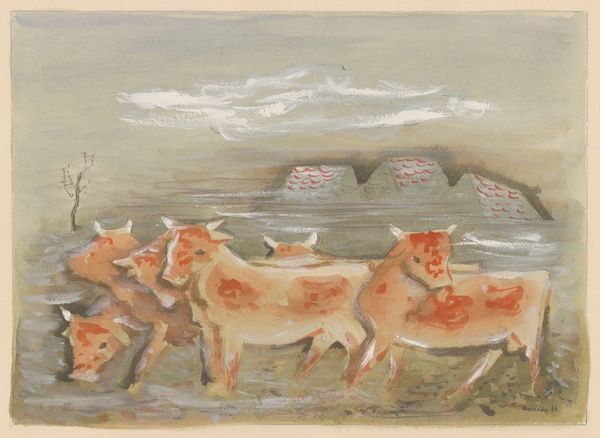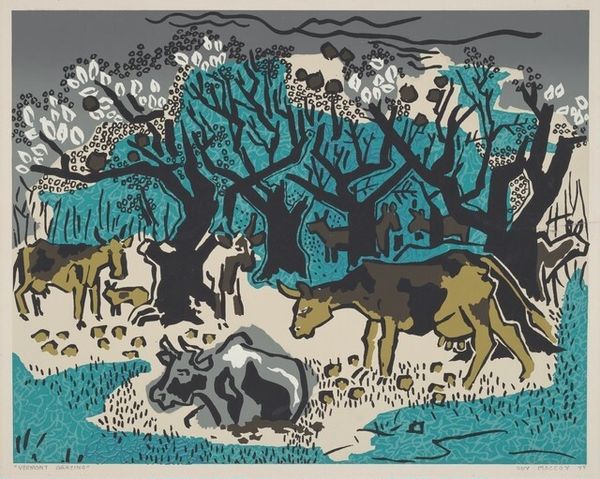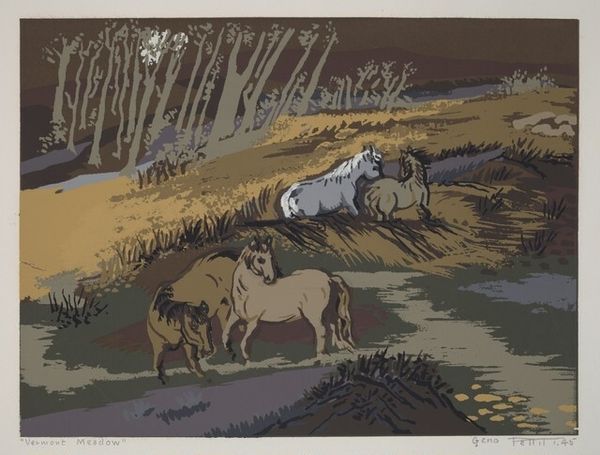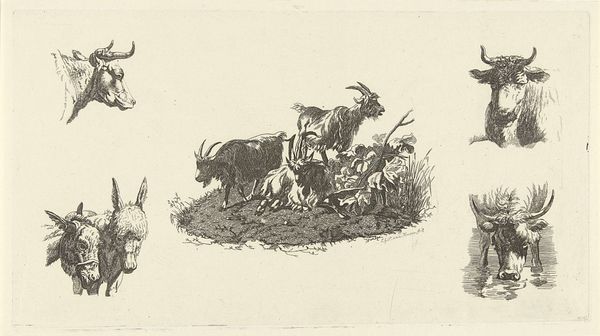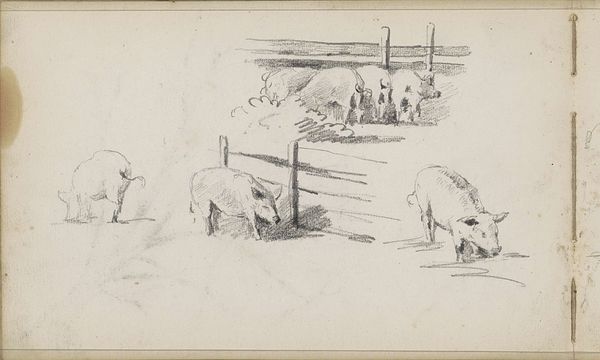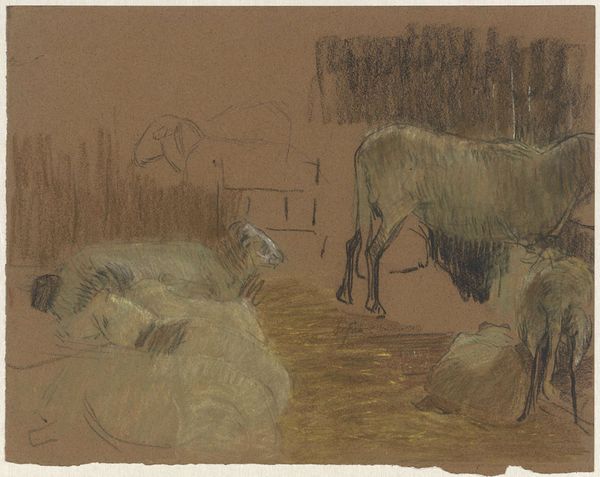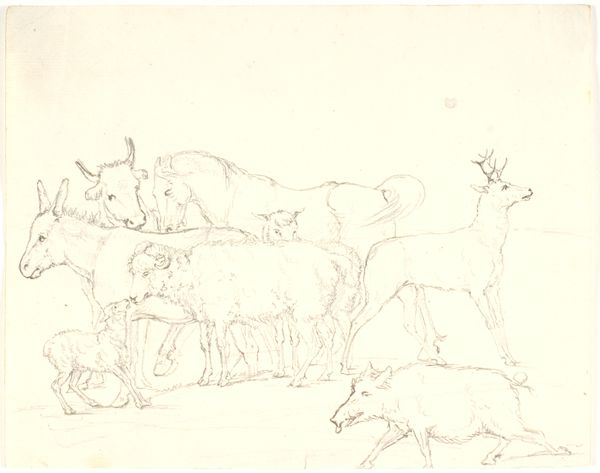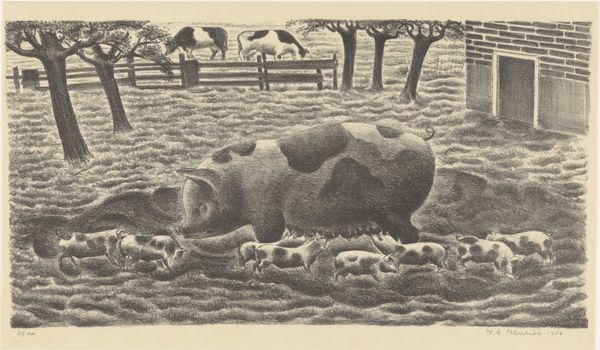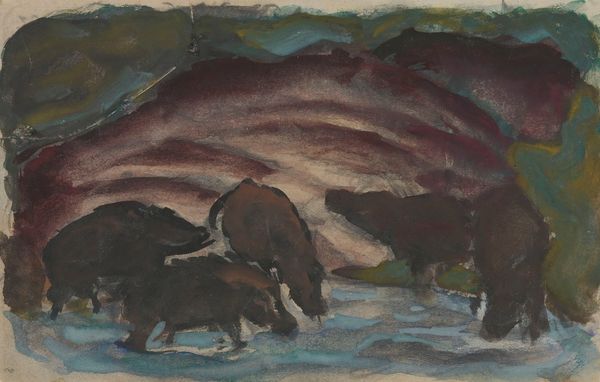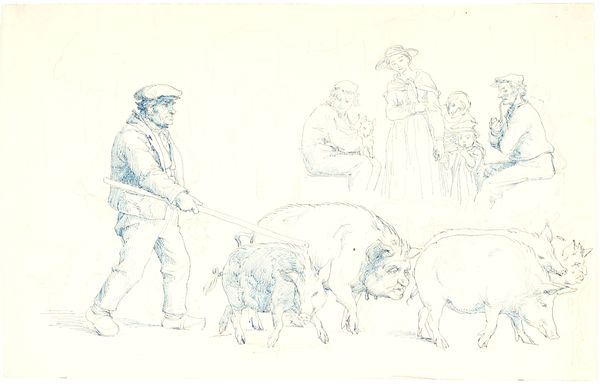
painting, watercolor
#
painting
#
landscape
#
figuration
#
watercolor
#
folk-art
#
genre-painting
Copyright: Ivan Generalic,Fair Use
Editor: This is "Hlebine Swineherd," a 1931 watercolor by Ivan Generalic. There's something quite folksy about it, with the rows of pigs painted in a simple style. What strikes you when you look at this piece? Curator: What I find most compelling is how Generalic utilizes a seemingly straightforward folk style to portray labor. Look closely at the composition. What kind of social context might have produced this image of pig farming? Editor: I see…it seems like a rather harsh environment. It makes me think about the conditions for these workers, almost like itinerant laborers. And the tents in the back? Curator: Exactly. How does Generalic use the materials, specifically watercolor, to evoke that harshness? The muted colors, the thin washes…do they tell us something about resource scarcity, about the means of survival? Consider also how watercolor allows for a certain transparency, revealing the process. Does this relate to the transparency of the peasant experience he is depicting? Editor: So you are saying the technique itself reflects the socio-economic realities? Curator: Precisely. The unpretentious nature of watercolor, its accessibility, contrasts with the elite media often associated with “high art.” Is Generalic making a statement about the value of labor, about blurring the lines between craft and fine art? Editor: That’s fascinating. I initially saw it as just a quaint folk scene, but now I see how the materials and the way they’re used are intrinsically linked to the story it tells about labor and living conditions. Curator: Right. Considering this image within its material and historical context lets us question art history's traditional value judgements. We are given a glimpse of what labour and landscape are made of.
Comments
No comments
Be the first to comment and join the conversation on the ultimate creative platform.
